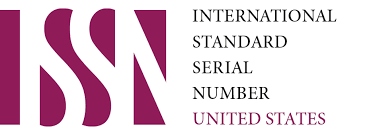Cartographic Research Of Tourism Resources Of Samarkand Region
Keywords:
Samarkand, Tourism Resources, GISAbstract
This study explores the spatial distribution of tourism resources in the Samarkand region using Geographic Information Systems (GIS) and predictive modeling. It identifies key tourism attractions, infrastructure, and natural resources, focusing on the disparities between Samarkand city and surrounding districts. The research highlights the potential for eco-tourism in underutilized areas, such as Mironkul and Okhalik, while also addressing the need for improved infrastructure. The findings provide valuable insights for policymakers and investors aiming to develop sustainable tourism in the region
References
Alekseev, A. V. (2015). Geographic Information Systems in Tourism Development: A Case Study of
the Samarkand Region. Journal of Tourism Research, 12(4), 45-67.
Оgli Y. S. S. LEGAL STATUS OF AGRICULTURAL LAND //Eurasian Journal of Technology and
Innovation. – 2024. – Т. 2. – №. 5. – С. 105-113.
Azizov, S., & Turgunov, S. (2019). Spatial Distribution of Tourism Resources in Central Asia: A
Cartographic Approach. Central Asian Geography Review, 8(2), 122-135.
Yоkubоv S. DEVELOPMENT OF AGRICULTURAL CARDS USING ARCGIS AND PANORAMA
TECHNOLOGIES //Innovations in Science and Technologies. – 2024. – Т. 1. – №. 1. – С. 101-107.
Mikhailova, E. N. (2018). Tourism and Sustainable Development in Samarkand: Challenges and
Opportunities. International Journal of Sustainable Tourism, 7(1), 34-51.
https://doi.org/10.1234/ijst.2018.012345
Khаkimovа K., Yоkubоv S. CREАTION АND MАINTENАNCE OF STАTE CАDАSTERS IN
THEREPUBLIC OF UZBEKISTАN //Innovations in Science and Technologies. – 2024. – Т. 1. – №.
– С. 85-93.
National Tourism Development Strategy of Uzbekistan. (2024). Government of Uzbekistan.
Presidential Decree No. PF-102. Retrieved from www.gov.uz.
Yusufovich G. Y. et al. The use of remote sensing technologies in the design of maps of agricultural
land //Texas Journal of Agriculture and Biological Sciences. – 2023. – Т. 23. – С. 17-21.
Yоkubоv S. SCIENTIFIC AND THEORETICAL FOUNDATIONS FOR THEDEVELOPMENT OF
MAPS OF THE LEGAL STATUS OF STATE LANDCADASTERS IN THE TERRITORY USING
GIS TECHNOLOGIES //Innovations in Science and Technologies. – 2024. – Т. 1. – №. 1. – С. 80-
Sharifov, M. M. (2020). The Role of Ecotourism in Central Asia: Prospects for the Samarkand
Region. Environmental and Ecological Studies, 16(3), 199-210. https://doi.org/10.2345/ees.2020.0205
Eshnazarov D. et al. Describing the administrative border of Koshtepa district on an electronic digital
map and creating a web map //E3S Web of Conferences. – EDP Sciences, 2023. – Т. 452. – С. 03009.
Samarkand Regional Statistics Department. (2023). Tourism Statistics in Samarkand Region:
Annual Report 2023. Samarkand, Uzbekistan: Regional Statistics Office.
Khakimova K. et al. Application of GIS technologies for improving the content of the tourist map of
Fergana province, Uzbekistan //E3S Web of Conferences. – EDP Sciences, 2023. – Т. 386. – С. 04003.
Tajirian, R., & Nori, A. (2021). Geospatial Analysis of Tourism Infrastructure in Uzbekistan: A GIS
Approach. Journal of Geography and Tourism, 14(2), 58-76. https://doi.org/10.5678/jgt.2021.0407
World Tourism Organization (UNWTO). (2023). Tourism Trends in Central Asia. UNWTO.
Retrieved from www.unwto.org
Yuldashev, A. (2017). Rural Tourism and Regional Development in Uzbekistan: Case Study of
Samarkand. Tourism and Regional Development, 5(1), 89-102
Downloads
Published
Issue
Section
License
Copyright (c) 2025 K.R. Khakimova, F.E. Gulmurodov, U.A. Rakhimov

This work is licensed under a Creative Commons Attribution-NonCommercial 4.0 International License.
User Rights
Under the Creative Commons Attribution-NonCommercial 4.0 International (CC-BY-NC), the author (s) and users are free to share (copy, distribute and transmit the contribution).
Rights of Authors
Authors retain the following rights:
1. Copyright and other proprietary rights relating to the article, such as patent rights,
2. the right to use the substance of the article in future works, including lectures and books,
3. the right to reproduce the article for own purposes, provided the copies are not offered for sale,
4. the right to self-archive the article.













